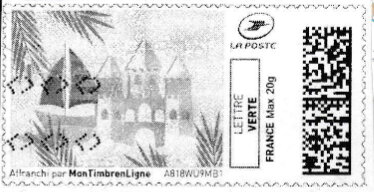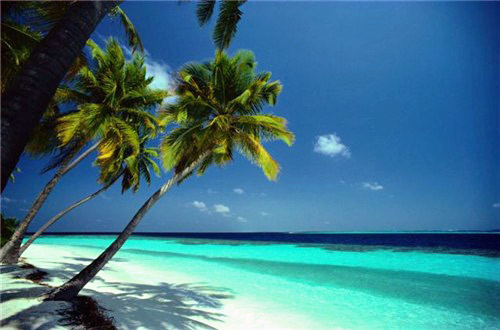Stamp: Summer. Sand Castle in black (France 2019)
Summer. Sand Castle in black (France 2019)
01 January (France ) within release MonTimbrEnLigne. Seasons goes into circulation Stamp Summer. Sand Castle in black face value Lettre No Face Value
| Stamp Summer. Sand Castle in black in catalogues | |
|---|---|
| Colnect codes: | Col: FR-TIM 2019-138b |
Stamp is square format.
Also in the issue MonTimbrEnLigne. Seasons:
- Stamp - Summer. Flowers and a Watering Can. Blue colour missing face value Prioritaire;
- Stamp - Summer. Flowers and a Watering Can. Resdesign face value Lettre;
- Stamp - Autumn. Hedgehog and Acorns. Specimen face value Lettre;
- Stamp - Spring. Flowers in Wellies. Black face value Lettre;
- Stamp - Summer. Flowers and a Watering Can in black face value Lettre;
- Stamp - Winter. Snowman in black face value Lettre;
- Stamp - Spring. Flowers in Wellies face value Lettre;
- Stamp - Summer. Fishing Hut on the Atlantic Coast face value Ecopli;
- Stamp - Autumn. Bonfires and Nuts in black face value Lettre;
- Stamp - Autumn. Pumpkins and Pears in black face value Lettre;
- Stamp - Spring. Birds Nesting. Lemon Background face value Lettre;
- Stamp - Summer Landscape in black face value Lettre;
- Stamp - Summer. Girl in a field of Sunflowers face value R1-AR;
- Stamp - Summer. Sand Castle in black face value Lettre;
- Stamp - Winter. Cat on the Windowsill in black face value Letre;
- Stamp - Winter. Sledge in black face value Lettre;
- Stamp - Summer. Beach Scene. Solitary Blue and White Beach Umbrella face value Ecopli;
- Stamp - Spring. Birds Nesting. Pink Background face value R1-AR;
- Stamp - Summer. Beach Scene. Windscreens face value R1-AR;
|
Data entry completed
46%
|
|
|---|---|
| Stamp Summer. Sand Castle in black in digits | |
| Country: | France |
| Date: | 2019-01-01 |
| Emission: | Personalized - Official |
| Format: | Stamp |
| Face Value: | Lettre No Face Value |
Stamp Summer. Sand Castle in black it reflects the thematic directions:
A beach is a landform alongside a body of water which consists of loose particles. The particles composing a beach are typically made from rock, such as sand, gravel, shingle, pebbles, etc., or biological sources, such as mollusc shells or coralline algae. Sediments settle in different densities and structures, depending on the local wave action and weather, creating different textures, colors and gradients or layers of material.
A modern sailing ship or sailship is any large wind-powered vessel. Traditionally a sailing ship (or simply ship) is a sailing vessel that carries three or more masts with square sails on each. Large sailing vessels that are not ship-rigged may be more precisely referred to by their sail rig, such as schooner, barque (also spelled "bark"), brig, barkentine, brigantine or sloop. There are many different types of sailing ships, but they all have certain basic things in common. Every sailing ship has a hull, rigging and at least one mast to hold up the sails that use the wind to power the ship. The crew who sail a ship are called sailors or hands. They take turns to take the watch, the active managers of the ship and her performance for a period. Watches are traditionally four hours long. Some sailing ships use traditional ship's bells to tell the time and regulate the watch system, with the bell being rung once for every half hour into the watch and rung eight times at watch end (a four-hour watch). Ocean journeys by sailing ship can take many months, and a common hazard is becoming becalmed because of lack of wind, or being blown off course by severe storms or winds that do not allow progress in the desired direction. A severe storm could lead to shipwreck, and the loss of all hands. Sailing ships are limited in their maximum size compared to ships with heat engines, so economies of scale are also limited. The heaviest sailing ships (limited to those vessels for which sails were the primary means of propulsion) never exceeded 14,000 tons displacement. Sailing ships are therefore also very limited in the supply capacity of their holds, so they have to plan long voyages carefully to include many stops to take on provisions and, in the days before watermakers, fresh water.
Summer is one of the four seasons. It is the hottest season of the year. In some places, summer is the wettest season (with the most rain), and in other places, it is a dry season. Four seasons are found in areas which are not too hot or too cold. Summer happens to the north and south sides of the Earth at opposite times of the year. In the north part of the world, summer takes place between the months of June and September, and in the south part of the world, it takes place between December and March. This is because when the north part of the Earth points towards the Sun, the south part points away.



